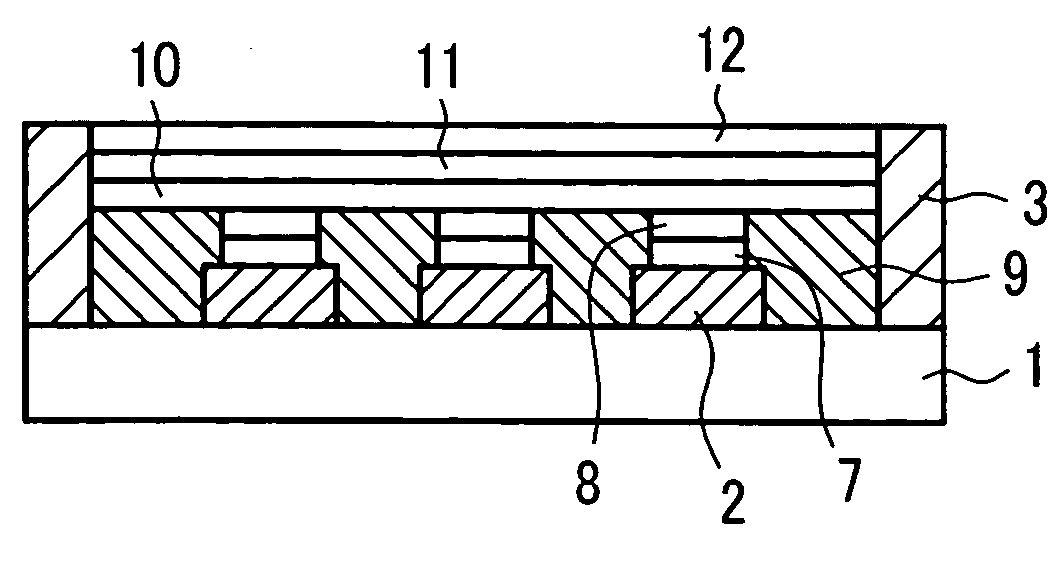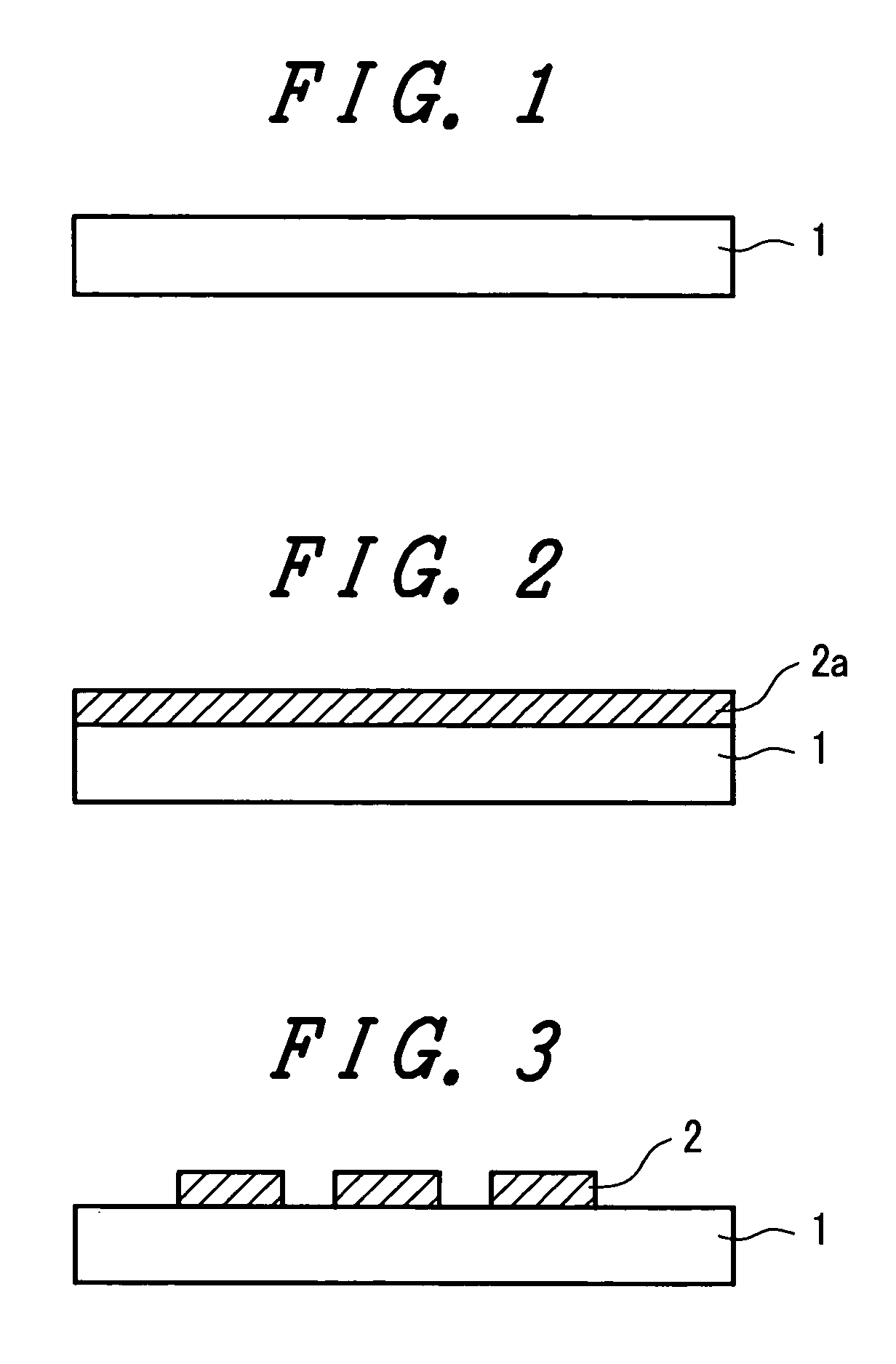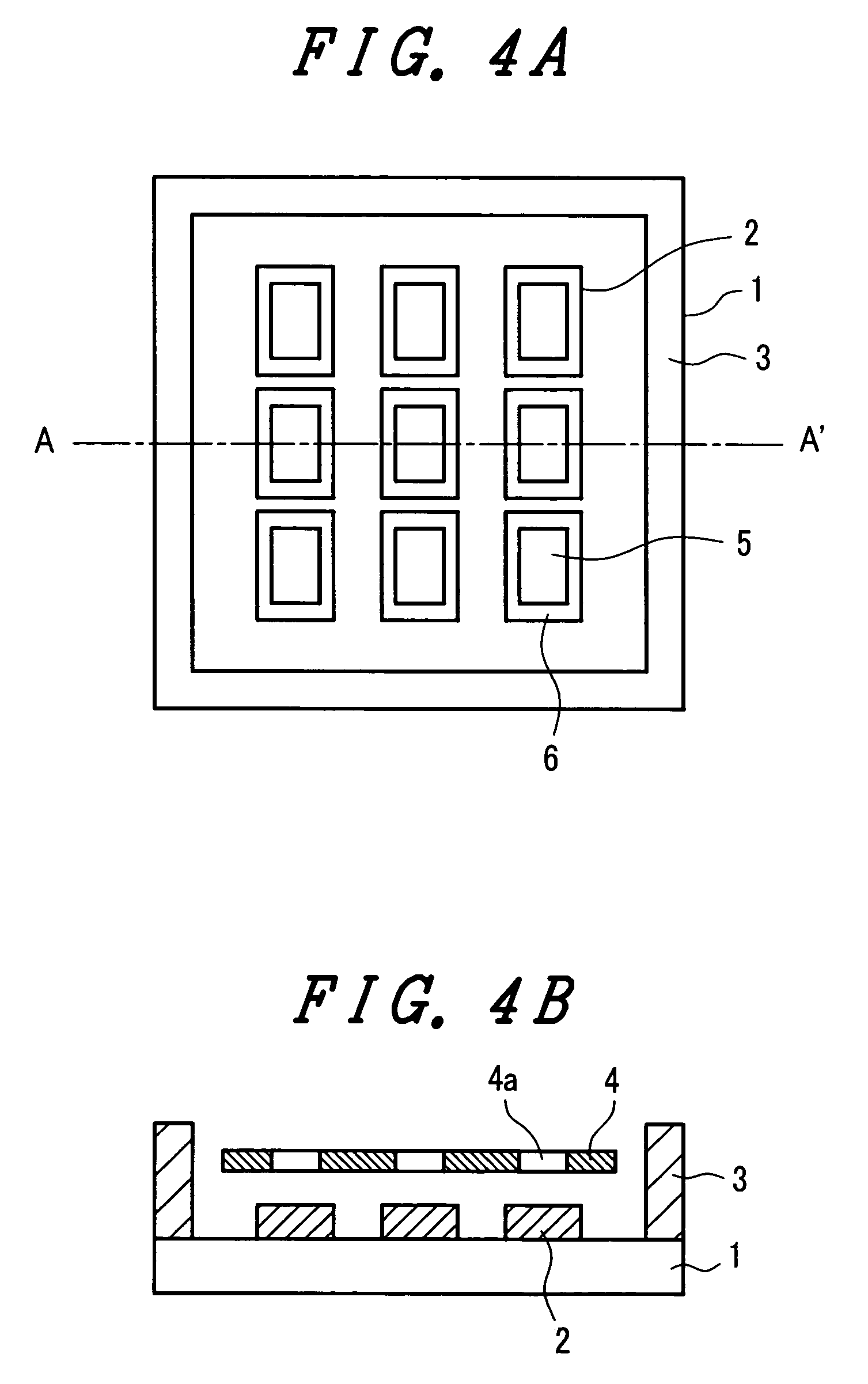Manufacturing method of organic electroluminescence display device
- Summary
- Abstract
- Description
- Claims
- Application Information
AI Technical Summary
Benefits of technology
Problems solved by technology
Method used
Image
Examples
Embodiment Construction
[0051] The mode for carrying out the present invention will be explained in detail in conjunction with the drawings, which show various embodiments of the invention.
[0052]FIG. 1 to FIG. 10 are cross-sectional views, partially including plan views, of respective steps in the method of manufacture of an organic electroluminescence display device according to the present invention. First of all, on a light transmitting glass substrate 1 having a thickness of approximately 1.1 mm, as shown in FIG. 1, an ITO film 2a having a film thickness of approximately 150 nm is formed by a sputtering method, as shown in FIG. 2. Thereafter, the ITO film 2a is partially etched by a photolithography method to form a plurality of anodes 2, which constitute pixel portions and have a size of approximately 150 μm×170 μm, by patterning for every pixel, as shown in FIG. 3.
[0053] Subsequently, on the glass substrate 1 on which these anodes 2 are formed, an organic material solution (ink) containing polyimid...
PUM
 Login to view more
Login to view more Abstract
Description
Claims
Application Information
 Login to view more
Login to view more - R&D Engineer
- R&D Manager
- IP Professional
- Industry Leading Data Capabilities
- Powerful AI technology
- Patent DNA Extraction
Browse by: Latest US Patents, China's latest patents, Technical Efficacy Thesaurus, Application Domain, Technology Topic.
© 2024 PatSnap. All rights reserved.Legal|Privacy policy|Modern Slavery Act Transparency Statement|Sitemap



